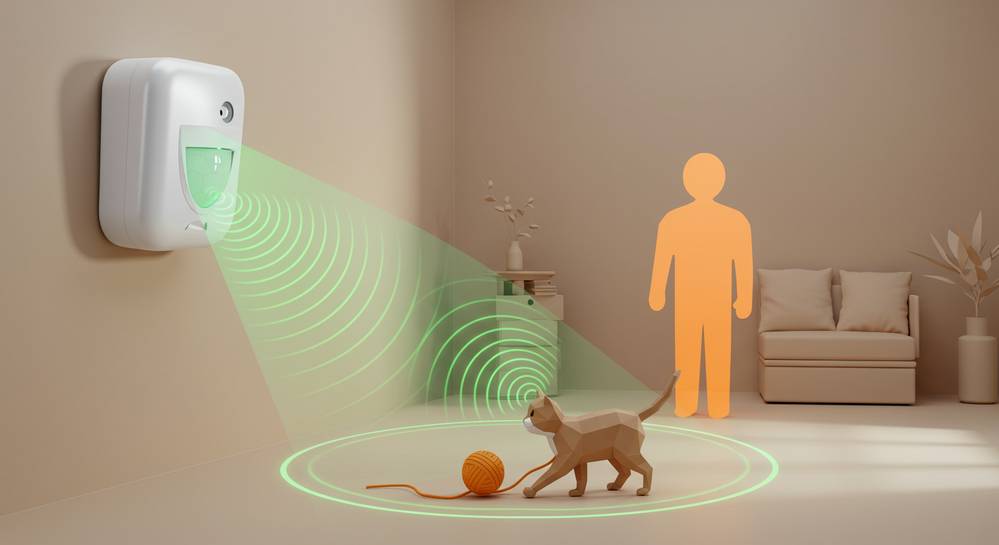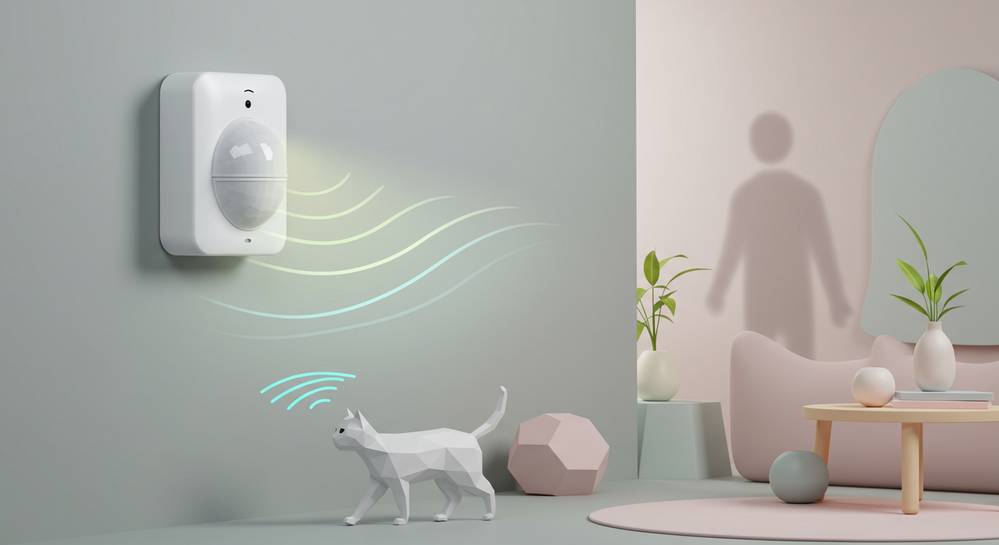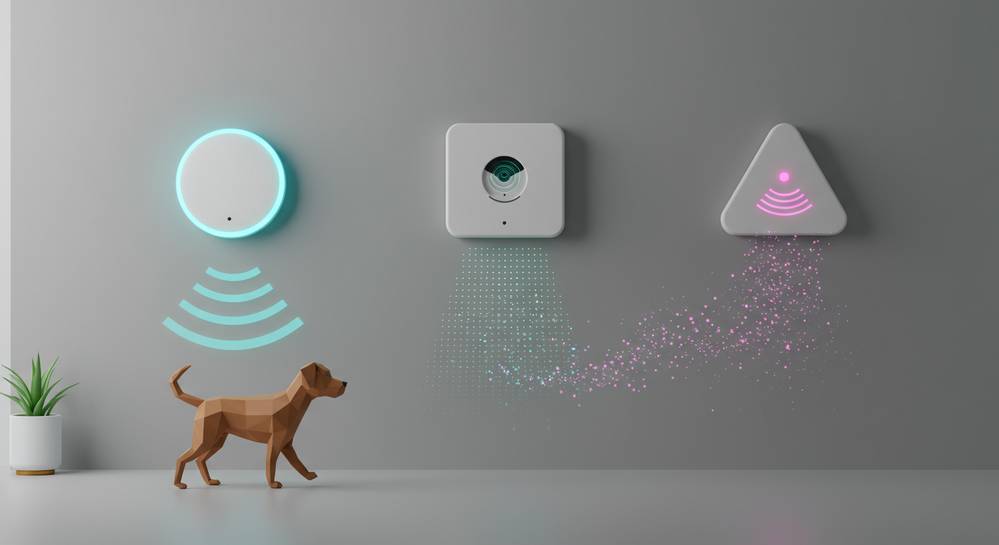A home security system should provide peace of mind, but frequent false alarms triggered by your pets can turn it into a source of frustration. The solution lies in advanced pet friendly motion detectors. These smart devices are specifically engineered to differentiate between human intruders and your furry family members, ensuring your home stays protected without unnecessary alerts. This guide explains how they work and what to consider.
Contents
What makes a motion detector pet friendly

Standard motion detectors often trigger false alarms because they cannot distinguish between an intruder and a pet. Pet friendly motion detectors solve this problem using smart technologies to ignore animals up to a specific weight. This allows your security system to remain active and effective without constant interruptions from your furry companions. These devices are a crucial component of the best home security systems available today.
How passive infrared technology adapts
Most pet immune sensors use advanced Passive Infrared (PIR) technology. A standard PIR sensor works by detecting the heat energy emitted by living beings. A pet friendly model enhances this with a special lens and intelligent signal analysis. This allows it to differentiate between the smaller heat signature of a pet and the larger one of a human. It creates an immunity zone close to the floor where your pet can move freely without triggering the alarm.
The role of dual technology sensors
For even greater accuracy, advanced models employ dual technology. This approach combines a PIR sensor with a microwave (MW) sensor. The microwave sensor emits signals that bounce off objects to detect movement. An alarm is only triggered when both the PIR sensor detects a human-sized heat signature and the MW sensor confirms corresponding movement. This dual-check system dramatically reduces the chance of a false alarm caused by pets.
Key features to look for when choosing a sensor

Choosing the right sensor involves more than just the label on the box. To ensure reliability, you must evaluate specific features that match your home and your pet. Paying attention to these details will prevent frustrating false alarms and guarantee your security system works as intended. Understanding these what smart home sensors are and their capabilities is the first step.
Adjustable sensitivity and weight limits
The most crucial feature is an adjustable weight threshold. Most sensors can be configured to ignore pets up to 40 lbs or even 85 lbs. If you have a larger dog or multiple pets that might play together, look for a sensor with a higher, customizable weight limit. This ensures the system is calibrated precisely for your specific situation and avoids unnecessary alerts.
Coverage area and detection pattern
Consider the size and layout of the room you want to monitor. Every sensor has a specific coverage range and angle, so ensure your chosen model covers the area without blind spots. Some advanced pet friendly motion detectors offer specialized lenses. These create pet-immune zones near the floor, allowing your animal to roam freely below the main detection field.
Comparing different types of pet immune detectors

Not all pet immune detectors are created equal. They vary in technology, accuracy, and ideal use cases. Understanding the primary types helps you choose based on your security needs, budget, and pets. Each technology offers a different balance between performance and cost, ensuring there is a solution for every home. This choice is a key part of designing your overall undefined strategy.
- Passive Infrared (PIR) Detectors: As the most common and affordable option, these sensors detect body heat. Pet friendly versions use a smart lens and algorithm to ignore heat signatures below a set threshold, making them ideal for homes with smaller pets.
- Dual Technology (Dual-Tec) Detectors: These models combine a PIR sensor with a microwave (MW) sensor. An alarm only triggers if both sensors detect an intruder, making them highly resistant to false alarms from pets of all sizes and other environmental factors.
- Smart AI-Powered Detectors: Often found in security cameras, these advanced sensors use artificial intelligence to identify objects. They can accurately differentiate between people, animals, and vehicles, virtually eliminating false alarms from pets.
Installation tips to prevent false alarms
Proper installation is just as important as the sensor quality. Even the best pet friendly motion detectors can cause false alarms if positioned incorrectly. Following a few key guidelines enhances system reliability and ensures pets do not trigger it. The goal is to maximize intruder detection while creating a safe zone for your animals.
- Mount at the correct height: Always follow the manufacturer recommendation, typically around 7.5 feet. Mounting it too low can place your pet directly in the primary detection zone.
- Avoid pointing at heat sources: Do not install the detector facing a fireplace, heating vent, or a window with direct sunlight. Sudden temperature changes can trigger false alarms in PIR sensors.
- Keep away from pet climbing areas: If you have cats that climb on bookshelves or cat trees, do not aim the detector in that direction. The sensor may interpret their elevated movement as a human threat.
- Ensure a clear field of view: Make sure the sensor’s view is not blocked by large furniture, plants, or decorations. A clear line of sight is essential for the accurate detection of real threats.
Investing in the right pet friendly motion detector is a crucial step toward a smarter, more reliable home security system. By understanding the technology, choosing features that match your needs, and ensuring proper installation, you can achieve a secure home that comfortably coexists with your beloved pets. For more expert guides on smart home technology, visit Dwelling Tech Trends and stay ahead of the curve.


